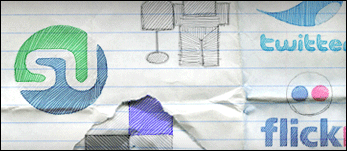 Most people think of social media as something that hinders learning, and perhaps rightfully so. Students who spend hours every day on Facebook probably aren’t allocating enough time to homework. However, social media can be used to engage students in the learning process, and it can bring some pizzazz to the classroom. It’s increasingly becoming an essential part of a teacher’s curriculum. Let’s take a look at how teachers are using social media to enhance the learning experience:
Most people think of social media as something that hinders learning, and perhaps rightfully so. Students who spend hours every day on Facebook probably aren’t allocating enough time to homework. However, social media can be used to engage students in the learning process, and it can bring some pizzazz to the classroom. It’s increasingly becoming an essential part of a teacher’s curriculum. Let’s take a look at how teachers are using social media to enhance the learning experience:
- Facebook Groups: Teachers can create a Facebook group for their class or for a particular class project and ask students to join the group. Students and their teachers can discuss class-related topics on a platform enjoyed by students. Teachers use the walls in their Facebook group pages to provide materials like articles, news clips, videos, and links to pertinent websites. Students can use discussion boards to share their thoughts.
- Facebook Applications: Facebook provides over 200 education-related applications. These tools allow teachers to provide presentations, tests, and notes for their students. The Study Groups application lets students work together outside of the classroom. They can work on group projects, share notes, and help each other prepare for tests. The Webinaria Screencast Recorder lets teachers make videos to share with their students on Facebook.
- Social bookmarks:Tools such as Delicious and Diigo are being used by teachers to provide current articles, websites, and other subject matter instead of using traditional textbooks. Diigo allows teachers to highlight text and photographs and add sticky notes to bookmarked pages, which allows teachers to include their thoughts and ideas. Students can subscribe to the RSS and are automatically notified when a new bookmark is added.
- Wikis: Teachers use wikis to provide students access to class documents, outlines, and other essential information. Students also have the opportunity to add their own content. The format encourages an exchange of ideas and adds a fun element to students’ homework.
- Twitter: Teachers can ask students to create a few education-related tweets every week. Teachers and students can ask questions and respond via twitter. The tweets often inspire a productive conversation about important topics and current events. It’s a great venue for students who may be too shy to respond to questions in the classroom.
- YouTube: Teachers can create a YouTube channel and develop and provide informative videos or slideshows. They can also provide links to relevant YouTube videos.
- Online Documents: Teachers can use Scribd and other social publishing websites to upload online materials to one location. Students can access notes, worksheets, and other things from home with their computer.: Through video, Yahoo Live and Ustream bring guest speakers into the classroom from remote locations. This can certainly add some zing to the learning experience.
Social media has become part of students’ every day lives. While it can be a major distraction from studying, it does have some very practical applications that enhance the learning process, both in the classroom and out.
This is a guest post by Brian Jenkins who has been a member of BrainTrack’s writing team for two years.




